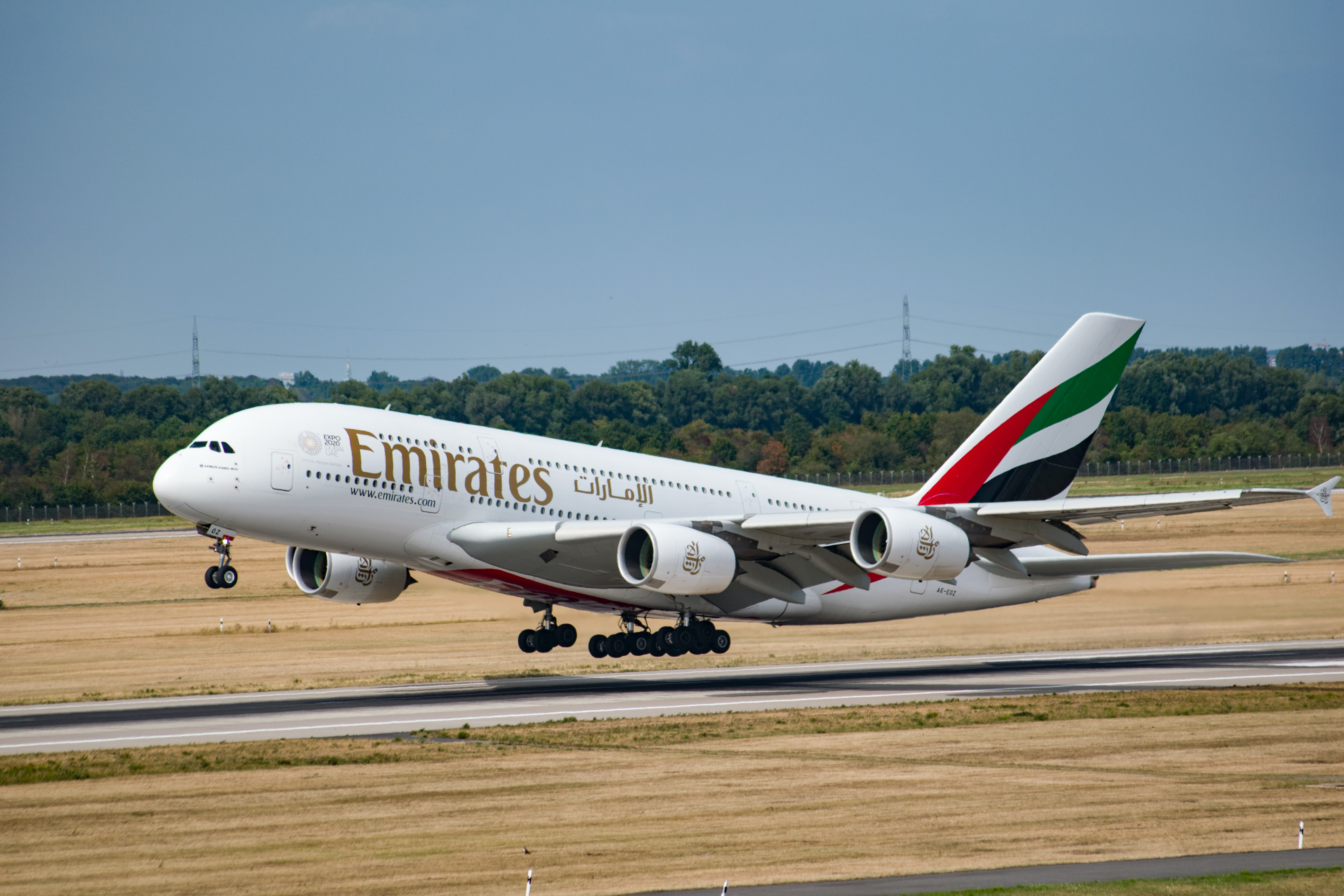The world's largest passenger airliner, the Airbus A380, first debuted in 2005, and has earned a reputation as the largest passenger airliner in the world. It first flew on 27 April 2005. It was delivered to Singapore Airlines in October 2007. Designs for the Airbus A380 began in 1988. As of November 2021, Airbus has produced 249 aircraft with Emirates owning the most at 121 aircraft.
What is Airbus A380?
The A380, an Airbus superjumbo, is the world's first twin-deck, twin-aisle airliner. The world's largest and most spacious passenger aeroplane cabin allows passengers to spread out in a quiet and comfortable environment. It's no wonder that the A380 is a favourite in all cabin classes due to the freedom it allows passengers to wander around the aircraft.
The A380 provides more seats than any other aircraft. It contains two full-length decks that are widebody in size. It became a solution to traffic increase and airport congestion as we recover from the pandemic.
Airbus A380 Specs & Feature
The cockpit of the A380, which has similar ergonomics to the flight deck designs of Airbus' previous fly-by-wire aircraft families, has sophisticated technology features such as big interactive displays, an enhanced flight management system, and improved navigation.
For example, the On-Board Airport Navigation System (OANS), developed in collaboration with Thales for the A380, is now being used on other Airbus models (A320neo, A330neo and A350). OANS provides pilots with an overview map of the airport apron and taxiways and the position of the aircraft on that map—the OANS aids in the reduction of surface navigation mistakes and the prevention of runway incursions.
Dimensions
Airbus decided to make the A380 cabin wider than competitors to appeal to passengers and thus airlines with a lot more passengers. With the standard A380 allowing 555 passengers over two decks. The Airbus has 49% more floor space than the Boeing 747-400. It has a total wingspan of 80m, and a length of 73m. The A380 has a maximum take off weight of 560,000kg.
Engine
Four 70,000lb thrust engines, either Rolls-Royce Trent 900 or General Electric / Pratt & Whitney Engine Alliance GP7200, power the aircraft. Rolls-Royce delivered the first Trent 900 engine in February 2004, and it flew successfully on an A340-300 testbed in May 2004. On December 4, 2004, the first GP7200 testbed flight was completed.
The Trent 900's engine sensor system is supplied by Goodrich, whereas Ametek provides the GP7200's sensor system. BAE SYSTEMS CONTROLS AND HISPANO-SUIZA PROVIDE the FADEC (full authority digital electronic control) system for the GP7200.
At maximum weight at sea level, ISA +15° conditions, and an initial cruise height of 35,000ft, take-off length is 2,900m.
All of these specs make the already popular aircraft even more appealing. Low-Cost Carriers, who already primarily use the A320, will find the more economical version of the A320 even more attractive. Larger luggage bins will also help them with quick airport turnarounds, as passengers prefer to bring smaller carry-on bags into the cabin to avoid unbundled fares that require them to pay for baggage. Passengers will also benefit from an improved air purification system, which will allow them to arrive refreshed.





Leave me a comment
Thank you for reading my post, if you want to leave a comment, you can do so below.